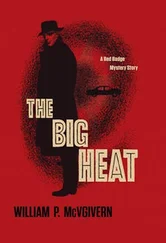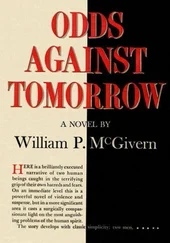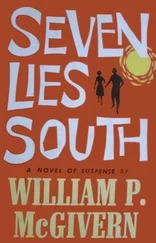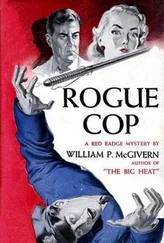“Of course, those same assholes,” the general continued with good-humored scorn, “also wasted tons of money trying to train seals and dolphins to attack enemy subs and coaching plants to talk to each other. In addition, they pumped nerve gas into the Holland and Lincoln tunnels in New York City at rush hour to see how it worked on commuters, and figured out a simple way to kill enemy agents by locking them in airtight rooms with blocks of dry ice. No ice, no evidence. Carbon dioxide did the job.
“Most of these experiements were directed at the young, and that helped spread the use of drugs through every economic level of society and in my judgment was responsible to an important degree for the anarchic counterculture of the sixties.
“But one good thing came out of those freaked-out programs. They clearly demonstrated to Mr. Correll, and to me, that something was crying out for attention everywhere in the world.
“The need was there, the time was right, because a vacuum had been created by a promise of chemical salvation, a promise that in turn had eroded the traditional foundations of psychoanalysis. Patients no longer wanted to spend half their lifetimes talking about why they despised their parents or why they got into sexual rut at the sight of clergymen or booted women or telephone poles or whatever. They were looking desperately for alternative therapy. So they turned to drugs — the new and available drugs — to relieve their anxieties and depressions and mental aberrations.
“A blind, lemminglike rush was on — into primal scream therapy, Rolfing, eastern cults, mantra chanting and drugs of every description. Which told Mr. Correll that the world was not only ready, but eager for the programs of Summitt City. A vacuum existed and it was screaming for somebody and something to fill it.
“We — the Correll Group — heard those cries and began trying to determine exactly what it might be that vacuum was demanding — what it craved . Which led us in turn to take a closer look at how our human brains interpret sensations and regulate our responses to them.”
General Taggart tapped his forehead. “Here we have a brain weighing about three pounds, with a volume of roughly one and a half quarts. It contains more than a hundred billion nerve cells or neurons. But unlike other cells, neurons cannot grow and divide because their physical area is bounded by our skulls. In spite of this immense concentration, neurons — except for a few exceptions — have no physical contact. The space between them is submicroscopic — thousands side by side wouldn’t equal the thickness of an onion skin.
“Chemicals bridge these gaps, carrying messages, alarms, pleasure signals and so forth. For a long time, scientists thought of the brain as an exquisitely tuned and proportioned electrical-chemical instrument or machine, a fabulous computer, in fact. But the brain isn’t a computer, it’s a gland; not electronic circuitry, but endocrine tissue through which the traffic of nerves and impulses are ruled in a not always benign tyranny by biochemical activators and their suppressors.
“These are the neuro-transmitters, the endorphins and the enkephalins, which pop science magazines are now touting hysterically as passports to a chemical Garden of Eden. But they regulate everything we do, in fact, whether we feel happy, excited or ready to blow our brains out. The illusion of free will is probably only an interplay of chemicals in the brain. Anybody using massive doses of tranquilizers knows that. Valium and the rest of them make you unable to express your anger, and if you can’t feel and do anything about rage, you sure as shit can’t change anything else in your life.
“These endorphin transmitters operate on specific receptor sites in the brain and spinal cord — like keys fitting into locks. We’ve used poppies for thousands of years without a clue how they worked. It wasn’t until the discovery of endorphins that we found out that these pretty flowers that poets loved to write about were simply mimics of the brain’s own morphia.
“These internal opiates, the endorphins, are there to monitor and screen out ambiguous, unbearable or destructive information. We’ve used opium, cocaine and alcohol for the same reason and with the same hope since we came down out of the trees. Now we’re learning that the human brain may be a goddamn natural warehouse full of chemicals designed to protect us not only from ourselves but from all the terrors of human experience. It’s just a question of finding the right synthetic chemical to fit the right receptor — the specific key for the specific lock — and releasing substances to create euphoria and guard us against fears and depressions.”
The general bared his strong teeth. “Very neat and tidy, one might assume. But there are contradictions along the way. Information about pain is processed in receptors, call them pain centers or agony switchboards, if you like, that are paradoxically loaded with opiate ‘locks.’
“Other sensory structures, chockablock with opiate clusters, deadening suppressors, remember, are part of the brain’s liveliest pleasure centers. Go figure.”
The general paused to remove a cigar from his olive-drab jacket and strip off the wrapper. After inspecting the green-flecked leaf, he applied a flame to the slender tip with a silver lighter whose sides were studded with miniaturized insignia of units he had commanded.
“The plain fact,” Taggart continued, “is that we simply don’t know how whatever it is we call ‘the mind’ relates to those hundred billion or so neurons that make up our brain. The mind may be an electrical field generated by the brain’s operation. We don’t know.
“But scientists are trying to map the roots of human nature by creating synthetic endorphins that can be fired like magic bullets at specific brain receptors.
“What kind of behavior do we expect those chemicals to activate? What sort of behavior do we want and need from human beings? We can eliminate pain and alcoholism and drug addiction. That’s a plus, certainly. And we know the sites of clinical anxiety and depression, and we’re zeroing in on dozens of new receptors. So good, you say. But once we find them and duplicate their triggering mechanism, we still don’t have any clear idea of what we want or what we’ve accomplished.
“Because we don’t have the slightest notion why those hundreds of unused receptors were plugged into our brains in the first place. Or what they’re there for. Sentinels guarding us from terrors outside this planet? Or further horrors from inside ourselves? I tell you, ladies and gentlemen, I wish to God I knew.”
Blowing smoke toward the ceiling, Taggart smiled at the rows of intent faces below him, brown and white and dusky ovals, eyes glowing with reflected light from the stage.
“Nevertheless, at Summitt City,” he went on, “we’re searching for keys to unlock as many neural receptors as we can find. We haven’t created what you’d expect from lurid magazines, charging bulls brought to a dead stop by somebody throwing a switch in their heads, cats running in terror from mice, men and women driven into sexual frenzies by chemicals ticking their pleasure centers. We haven’t done anything like that. Neither have we created a chemical wonderland. In some Utopia, chemical compounds may control our genetic codes and eliminate most pathology, prolong or shorten memory, eliminate pain, increase pleasure, moderate our aggressive thoughts, just like we use deodorants now. But Ancilia Four only produces manageable and functional human beings. They don’t need Moses and Jesus and Buddha. They’ll never preach brotherhood or go around spreading equality and liberty and freedom. But none of that’s going to be enough, which is why I don’t think a scientific solution to the world’s problems is possible.
Читать дальше
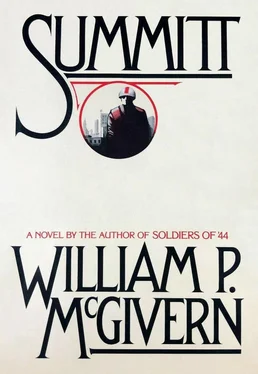
![Уильям Макгиверн - Завтра опять неизвестность [английский и русский параллельные тексты]](/books/35168/uilyam-makgivern-zavtra-opyat-neizvestnost-angli-thumb.webp)





